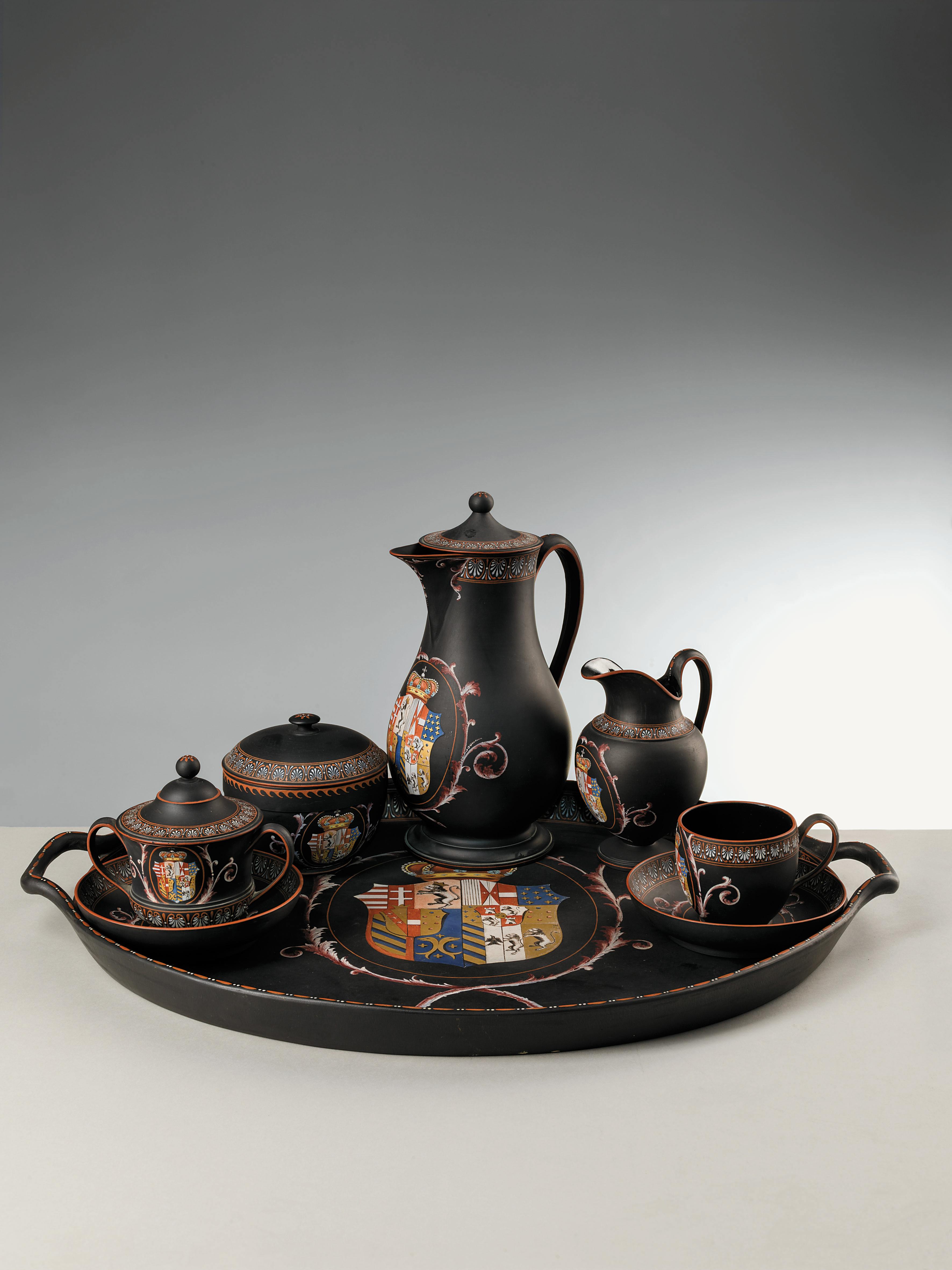Déjeuner
Wedgwood Manufactory
This is one of the few examples from the Wedgwood Manufactory preserved in the Porcelain Museum of the Pitti Palace. The presence on the Déjeuner of the coats of arms of Peter Leopold of Habsburg-Lorraine and his consort Maria Luisa of Bourbon dates back to a work commissioned before 1791, when the Grand Duke, after being crowned Emperor of Austria, returned to Vienna with his consort, leaving the government of Tuscany to his son Ferdinand III. It has been assumed that this set was produced in Naples: as a matter of fact, the art of working the so-called “English clay” to imitate the Queen's ware typical of the Wedgwood Factory was something common at the Real Fabbrica Ferdinandea in Naples. However, the satin-black colouring of the surface of this piece can be traced back to black basalt, also known as “black porcelain”, invented by Josiah Wedgwood, founder of the English factory with the same name. Moreover, the authorisation to pay for a service in “Porcelain or earthenware modelled in the Etruscan style”, issued by Peter Leopold in 1773 in favour of the “Wedgwood and Bentley merchants from London”, undoubtedly traces the creation of our déjeuner back to that English factory. Since 1768, the term “Etruscan” had been used to refer to an artefact in black fabric, visually similar to a bucchero, although after 1773 it was restricted to pieces inspired by ceramics from the Magna Graecia.
The fact that the Grand Duke commissioned the Wedgwood factory might appear quite singular if it weren’t for the ties that Peter Leopold had established with England in order to acquire instrumentation to be used at the Imperial and Royal Museum of Physics and Natural History, now home of the Specola Museum, which he founded between 1766 and 1775. In this regard, it is known that in 1775, Felice Fontana, a Physicist and Superintendent of the Royal Cabinets for experimental physics machinery, ordered retorts, pyrometers and probably high-temperature furnaces from the Wedgwood factory.
